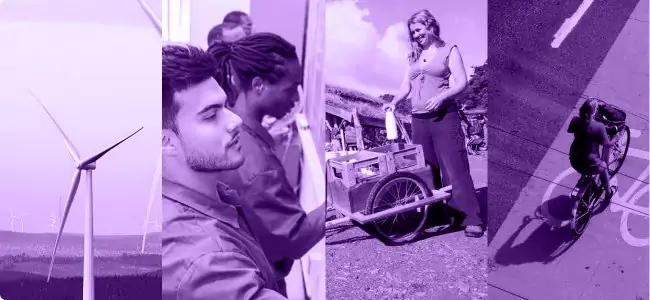One Year Later: A Dam Removal And A River’s Rebirth


Waterline is an ongoing series that explores the solutions making rivers, waterways and ocean food chains healthier. It is funded by a grant from the Walton Family Foundation.
When someone at the Washington Department of Natural Resources told Pete Barber about a derelict dam on the upper Washougal River, he was intrigued.
Barber, the Habitat Restoration Program Manager for the Cowlitz Indian Tribe, had grown up near the Washougal, a tributary of the Columbia River, and had heard tell of the Kwoneesum Dam.
“But I thought it was being used as a reservoir for the city of Camas,” he says. “Come to find out that it was a relic from the Camp Fire Girls [an outdoors-focused group for girls that preceded the Girl Scouts]. There was no real purpose, and it hadn’t been in use since 1985.”
Barber’s discovery was correct. Once an outdoor swimming spot for the Camp Fire Girls, the reservoir — and the dam that created it — had been tucked back in the woods and mostly forgotten about for 40 years.
Yet the dam, like all dams, had an outsized negative impact on the fish population, stopping the flow of steelhead and salmon upstream, meaning they weren’t able to access their headwater spawning grounds.
To make matters worse, the reservoir absorbed solar radiation in the summertime, and the outlet for the dam created a 30-foot waterfall, causing hot surface water to spill over, resulting in a deadly aquatic environment.
“We had temperatures of 75 degrees, which is lethal to salmonids,” Barber explains, referring to the family of fish that salmon and steelhead belong to.
At the same time that Barber was learning more about the Kwoneesum Dam, the Columbia Land Trust — an organization that helps conserve natural lands, waters and wildlife along the Columbia River — had acquired an adjacent property. Soon, they also began looking at the former Camp Fire Girls’ property, with an eye towards dam removal.
Weighed down by negative news?
Our smart, bright, weekly newsletter is the uplift you’ve been looking for.Barber and key players at the Columbia Land Trust struck a deal. If the Land Trust could find the grants to acquire the land, the Cowlitz tribe would find the grants to remove the dam. In doing so, the former would be protecting a piece of land from development, and the latter would be continuing its efforts to recover the locally depressed fish populations upon which its people rely.
It took seven years, but in October 2024, the project was completed.
Though much smaller than other dams that have been removed in the area, such as the Condit Dam, the Kwoneesum Dam — at 425 feet long and 55 feet tall, comprising 20,000 cubic yards of rock — was still a big undertaking.
Before any of the structure could be removed, though, the water from the three tributaries that fed the reservoir needed to be diverted.
This was achieved using a series of pumps — all screened to restrict any aquatic organisms from entering the system — that transported water to nearby tributary Texas Creek, and downstream to Wildboy Creek. Pumps were also installed to suction the lingering muddy slurry into porous geotubes, allowing water to seep through while trapping fine sediment. “Really, it was a water management project,” says Ian Sinks, Stewardship Director at the Columbia Land Trust.
With the water gone, dam removal could begin. The structure was not blasted with dynamite, which — contrary to popular belief — is typically only used on dams on rare occasions, for difficult-to-remove sections. The contractor, instead, removed it piece by piece with enormous jackhammers and excavators, so as not to send sediment downstream. Ultimately, construction crews excavated three new tributary channels within the reservoir, and placed logs, boulders and gravel to mimic natural conditions.
The Cowlitz Indian Tribe subsequently did a ton of work to improve the stream beds. As Barber explains it, dams stop the flow of water, but they also cut off the flow of gravel, rock and sediment from the headwaters all the way down to the lower reaches of a river system. That material is what salmonids use to spawn and rear their young in.
“That dam, which was built in 1965, essentially cut off all of that sediment and wood that would move through the system,” Barber says. “So the river downstream of the dam scoured down the bedrock.” This was not a friendly place for salmon or steelhead.
The Cowlitz tribe, with Barber taking the lead, did a wholesale channel rebuild, bringing in rock, native material and extra gravel.
Today, almost exactly a year after the last of the dam was removed, the whole area has been transformed, and the water temperature has returned to what it should be: Mid-50s in fall and spring, and about 62 degrees in the summertime.
Significantly, in June 2025, Barber and his colleagues discovered fragments of fish DNA using E-DNA technology, indicating the presence of salmonids in the stream. “We also had some visual observations of adult fish coming back to this reach, and redds [the nests where salmonids lay their eggs] that were located within the reach downstream of the dam,” Barber says. “We went from a zero to a positive.”
So far only steelhead have been spotted, but Barber is hopeful that Coho — a species of salmon — will return as well. “It just takes one pair! Then you can start to jumpstart the return of Coho to this site.”


Wait, you're not a member yet?
Join the Reasons to be Cheerful community by supporting our nonprofit publication and giving what you can.
Join Cancel anytimeThe revegetation and riparian efforts are ongoing. So far, Barber and his team have planted 40,000 trees and shrubs specifically suited to riverbanks, and have heavily seeded the area. “This is a landscape that had no vegetation — it was a nine-acre reservoir,” Barber says. The expectation is that by the end of 2027, there will be extensive leaf cover over the exposed tributary channels.
As exciting as the dam removal was, Sinks at the Columbia Land Trust is particularly enthusiastic about what will happen next. “The beavers are going to come in, and beavers are going to do what they do — they’re natural system engineers,” he says. “Even fish, when they come in and spawn, they can shape the ground. All of this builds habitat complexity and that builds resiliency over time. And so, when we see fish right away, it’s thrilling because it also means it’s only going to get better.”
Scrolling photos courtesy of the Cowlitz Indian Tribe and the Columbia Land Trust.






Please be good and do not spam. Thank you.